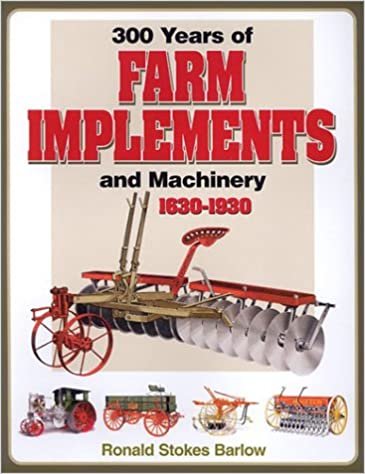"Starting around 1830, a handful of American blacksmiths, inventors and entrepreneurs created a new industry devoted to producing a wide array of implements that would forever relieve farmers from a 3,000 year legacy of back breaking manual labor and increase their production beyond sustenance levels," writes antique farm implement enthusiast Ronald Barlow in the introduction to this identification guide to agriucultural collectibles.
Barlow surveys the 300-year history of American agriculture from 1630-1930 in a series of essays, beginning with the 1620 landing of the pilgrims and concluding with traction steam engines and gasoline farm tractors. In between are hundreds of antique engravings, reproductions of farm magazine pages and advertisements for everything from cob cutters to pumping wind mills.
Remnants of these machines and implements can be found in old farmsteads, museums, thrift shops, antique stores and junk yards all across America. Many are rare and obsolete items like potato bug sprinklers or asparagus cutters that are difficult to identify or determine their use or historical importance. This guide helps solve such mysteries for the collector, the curator and the casually curious.
Drawn primarily from publications like American Agriculturist and The Cultivator, and from the trade catalogs of manufacturers like John Deere, Buffalo Pitts, McCormick Harvesting Machine Co. and B.F. Avery & Sons, the excerpts and advertising capture the mood of the era and help place each piece of equipment in the context of its use and importance.
